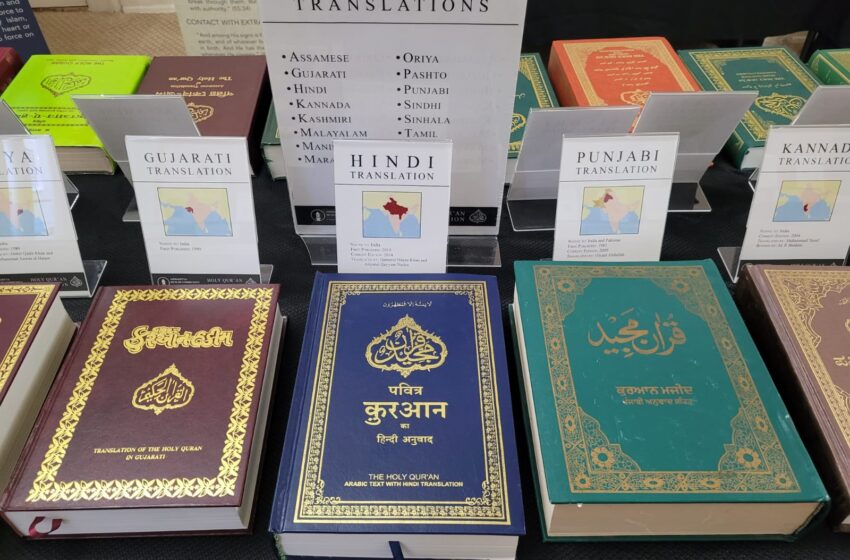The American Fazl Mosque hosts Holy Quran exhibition in Washington

The American Fazl Mosque, Ahmadiyya Muslim community’s oldest mosque in Washington DC, hosted an ‘amazing’ and ‘inspiring’ exhibition of modern translations of the Holy Quan in the major languages of Europe, Asia, Africa and the Indian subcontinent.
“The Holy Quran revealed in the Arabic language to the Prophet Muhammad is the sacred text of the religion of Islam followed by about two billion adherents around the world with diverse nationalities, cultures and languages,” Yahya Luqman, Imam of the mosque noted in an interview with DesiMax.
The Oct 5-10 exhibition was a “part of the Ahmadiyya Muslim Community’s continuous mission to educate and remove misconceptions about Islam in an effort to bring the teachings of the Holy Quran to the general public in all major languages of the world,” he said. “We also strive to educate our own Muslim communities of the peaceful, tolerant and unifying message of the Holy Quran in such a diverse world that we live in.”
The exhibition featured informative displays about revelation, prophecy, history and science featuring Arabic script and translations in more than 50 languages giving a glimpse into these topics as they are presented in the Holy Quran. The manner of its revelation to Prophet Muhammad, prophecies of future happenings which now history bears witness to their fulfillment were also illustrated.
There were also some commentaries of the Holy Quran and the Muslim belief of the congruity of the word of God and His works which can be explored and further understood through science.
So far, the Holy Quran has been translated by the Ahmadiyya Muslim Community into more than 70 languages. Translations of most major languages of the world were featured in this exhibition. Each translation is published side by side with the original Arabic script of the Holy Quran.
READ: Sehgal Foundation celebrates 25 years of empowering rural India (October 16, 2024)
Of the more than 50 translations of the Holy Quran, 19 translations are from the Indian subcontinent. This shows the great diversity of the Indian subcontinent culture but also the heritage of Islamic faith that can be found in all the cultures on the subcontinent, according to Luqman.
Indian subcontinent translations covered Assamese, Bengali, Farsi, Gujrati, Gurmukhi/Punjabi, Hindi, Kannada, Kashmiri, Malayalam, Manipuri, Marathi, Nepalese, Oriya, Pashto, Sindhi, Sinhala, Tamil, Telugu, and Urdu.
African translations covered Asante Twi, Hausa, Igbo, Kriol, Swahili, Yao and Yoruba.
Asian translations covered Chinese, Indonesian, Japanese, Korean, Tagalog, Tuvalu and Vietnamese.
European translations encompassed Albanian, Bosnian, Bulgarian, Czech, Danish, Dutch, English, French, German, Greek, Italian, Polish, Portuguese, Russian, Spanish, Swedish, and Turkish.
In addition to these three different English translations as well as the newest addition the Hebrew translation of the Holy Quran were on display.
The Quran exhibition also featured a digital photo exhibit of the history of the American Fazl Mosque commemorating 75 years in 2025.
About 50 visitors which included neighbors, clergy, students and diplomats came to the exhibition and wrote comments like “amazing,” “inspiring” and “beautiful” in the visitors’ book.
The Ahmadiyya Muslim Community has been organizing these educational exhibitions in the DMV area since 2010, following a few incidents of public Quran burnings in the United States, Luqman said. Previously, it has been exhibited about 15 times since 2020 in public venues in Washington DC with nearly a thousand interested visitors.
The response is usually overwhelmingly positive, the Imam said describing it as an “effort to educate and remove misunderstandings and bring appreciation for the unity of humanity, diversity of language and culture in a very polarized world.”
